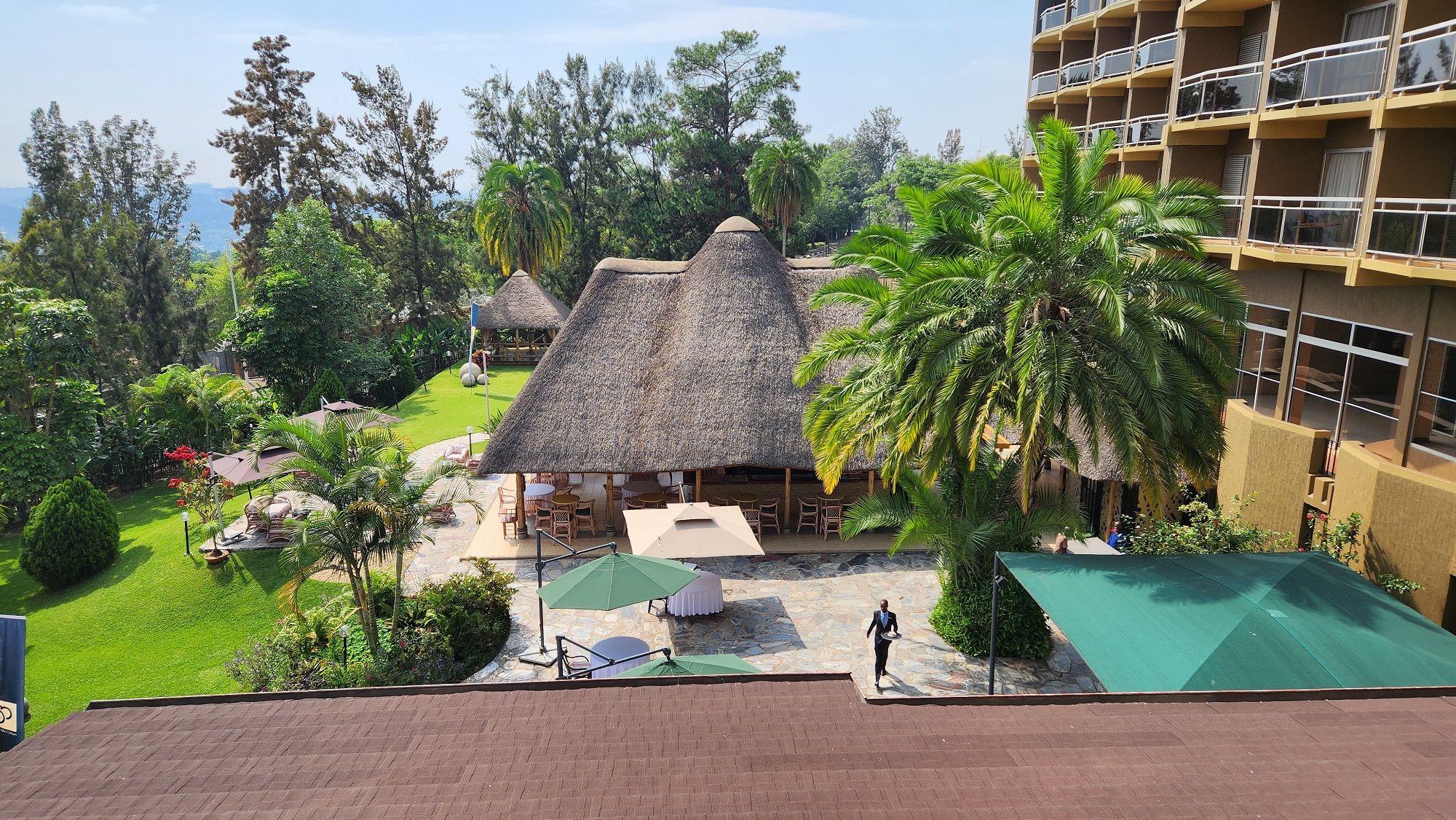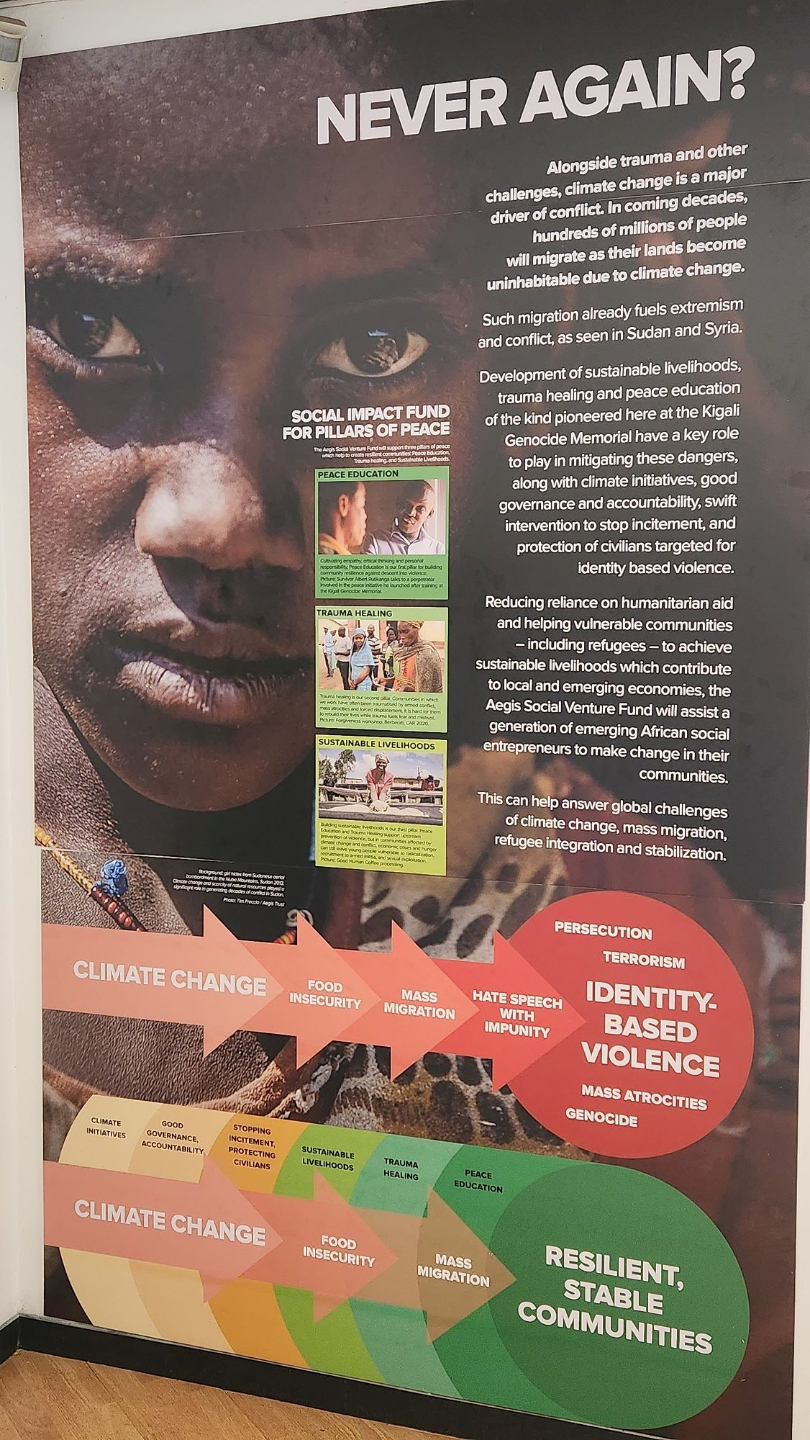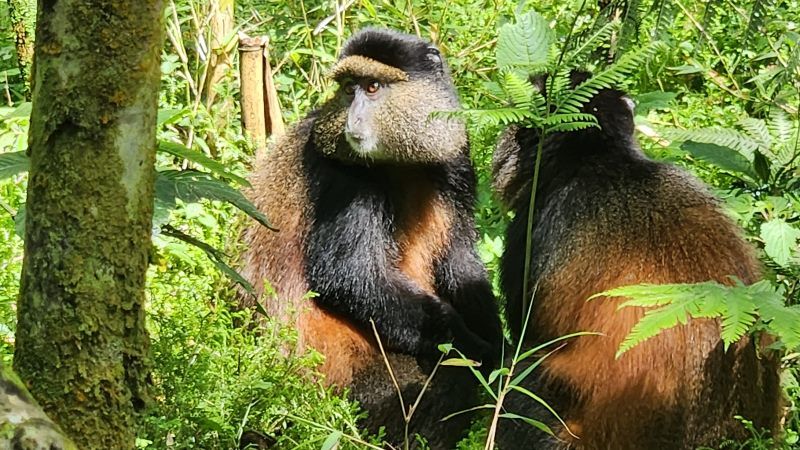Photos of the Day
Rwanda
(Sept 2023)
Our trip to Rwanda was going so well. My mother and I were blown away by the beauty of the country, the generosity of the people, and the way the country is dealing with and recovering from the genocide. We got lots of chances to talk to locals to gain a better understanding of how the country is moving forward.
Sadly I’m talking about the trip in the past tense…

Just moments after arriving at the gorillas in Volcanos National Park, my mother had a health incident, possibly due to the heat and altitude. As a result, we cut our visit to the gorillas and to Africa short and returned home. She got excellent medical care and is fine now. We had had about 5 minutes with the gorillas up close and personal and got an iconic shot of each of us with a gorilla before we had to leave.
OK getting that out of the way, here are a few highlights.
Hotel Milles Collines
We stayed at the Hotel Milles Collines (Thousand Hills) featured in the film Hotel Rwanda. A guide later in the week at the Campaign Against Genocide Museum told us that the story in the movie contained many inaccuracies. Apparently instead of being a good Samaritan, the hotel owner charged people who stayed there to escape being slaughtered and the pro-genocide media broadcast from the 4th floor of the hotel. Now that I have more information, I plan to re-read Romeo Dellaire’s book Shake Hands with the Devil to understand his perspective. It seemed to us that despite Dellaire’s inability to stem the murder, Canada is well thought of. We talked to many people whose dream is to come to Canada to study or work. Sadly, it seems they require bank statements showing assets of at least 15,000 to get even a visitor visa, making it out of reach for the 99%.

Niyo Arts Centre
There are some people accomplishing astounding things in Rwanda to create jobs and hope for those dispossessed by the genocide.
The Niyo Arts Centre was founded by a man who was left an orphan as a young child and was adopted by a Canadian family. Now he runs a centre to involve youth in the arts and funds it through donation and sales of art.

The Genocide Memorial
The Genocide memorial is a thoughtful exhibit which explains how the genocide occurred and then compares it to the other genocides of the 20th century showing the similarities between them. There is no holding back on the horror but somehow being immersed in it head on with an audio guide tour makes it possible to face.
In each case of genocide, one group mounted a plan to vilify another group leading to media and governmental actions against them. In every case, there was a premeditated plan of extermination.
In the case of Rwanda, over 2 million people were killed. Outside on the grounds, thousands of people are buried in visible underground crypts and there were many flowers left by loved ones even 30 years after the fact.

A Day in the Life
The country has made a lot of progress in governance, infrastructure, health care and education, but 70% of the country is still very poor, working for about $1/day. Most of the country is agricultural and we did not see a single farm implement or machine other than hoes and machetes. The fields are small and entirely worked by hand as in the attached photo. We were told that although Rwanda is very fertile and they grow almost anything including rice, corn, cassava, many vegetables and fruits as well as animals and despite almost every acre of arable land being in use, the country cannot produce enough food to meet their needs. Rwanda is one of the most densely populated countries in Africa with 14 million living in an area 1/30 the size of Alberta. Another woman on our tour, a pediatrics resident from who had just finished one month at the children’s hospital in Kigali, told us that most of the kids being brought to emergency had some level of malnutrition contributing to their health problem. Many of these farm workers walk to and from work up and down the 1000 hills that comprise the country and do hard manual labor all day. It looked like a grueling existence.

Golden Monkeys
The day before our Gorilla trek, we walked to see the endangered golden monkeys. Unlike the farm workers, they seemed to have a good life. They hang out in the bamboo forest and eat bamboo shoots, groom each other and run up and down the bamboo trees.
They are endangered so I guess life hasn’t aways been good. But with support from tourism dollars they are making a comeback.

The Mountain Gorillas
And lastly a great shot of one of the gorilla family we saw. We were literally a few meters from these gorgeous animals. Like the golden monkeys they were foraging for bamboo shoots. They seemed not at all concerned by our presence. And their numbers have increased since increased protection was put in place. Now former poachers and their children are hired as guides, trackers and porters. Local residents are compensated when the gorillas eat their crops and there is extensive education and collaboration with the communities which border on the park. The park is contiguous with parts in Uganda and the DRC but Rwanda seems to be taking gorilla conservation the most seriously.


